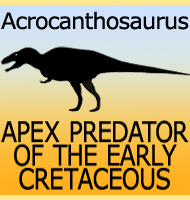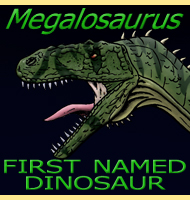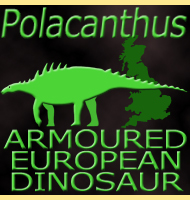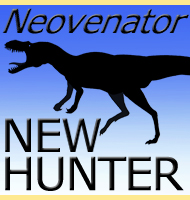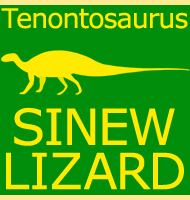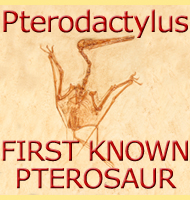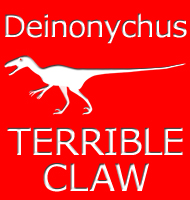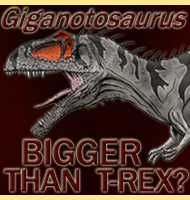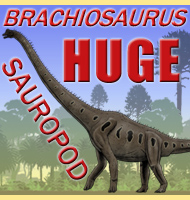


Pelecanimimus
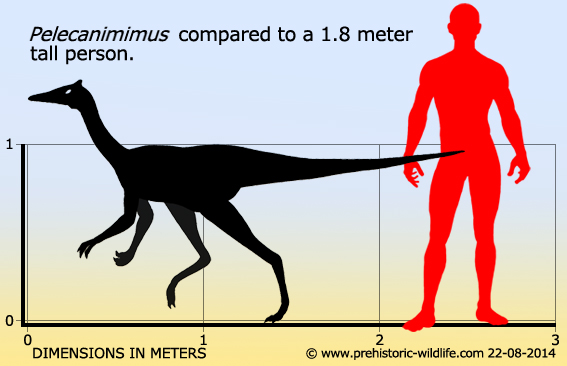
Name:
Pelecanimimus
(Pelican mimic).
Phonetic: Pel-e-can-i-mime-us.
Named By: Bernardino P�rez P�rez-Moreno, Jos� Luis
Sanz, Angela Buscalioni, Jos� Moratalla, Francisco Ortega
& Diego Rasskin-Gutmanas - 1994.
Classification: Chordata, Reptilia, Dinosauria,
Saurischia, Theropoda, Maniraptoriformes, Ornithomimosauria.
Species: P. polydon (type).
Diet: Piscivore/Carnivore.
Size: Estimated up to 2.5 meters long.
Known locations: Spain, Cuenca Province -
Calizas de La Hu�rguina Formation.
Time period: Barremian of the Cretaceous.
Fossil representation: Skull and frontal portion of
the skeleton. Remains of soft tissue are also known.
Pelecanimimus
is a special dinosaur as it is considered to be one of if not the
earliest known ornithomimosaur.
Pelecanimimus
also stands out from
later forms because of the large number of teeth that are still present
within its mouth, around two hundred and twenty in total. These
teeth are thought to have given Pelecanimimus a
bite that cut and
ripped, but in later forms these teeth would become replaced with a
keratinous beak that did much the same job.
There
is a lot of debate and study regarding what later ornithomimosaurs ate
because their keratinous beaks could have been used for a variety of
feeding habits upon both animals and plants. Palaeontologists are
a little more confident in calling Pelecanimimus
a predator however
because of one special feature. Soft tissue remains have revealed the
presence of a gular pouch similar to those seen in pelicans (hence
the name which means ‘pelican mimic’). Pelecanimimus
is thought
to have lunged into water to catch fish and possibly other small
aquatic vertebrates like frogs which were stored in the pouch until the
excess water could be passed out of the mouth and prey finally eaten.
Pelecanimimus
also had a keratinous head crest that rose up from the back of the
head. The bones in the lower arm are placed tight together for
additional rigidity and the claws growing from the ends of the fingers
are straight, something that is more common in primitive
ornithomimosaurs. It’s possible that the hands and claws also played
a part in prey capture, or even feeding. Soft tissue impressions
also reveal that the skin was bare and scaley which indicates that
Pelecanimimus did not have a feather covering.
By
living and hunting in shallow waters means it is quite possible that
Pelecanimimus would have come into contact with
spinosaurid
dinosaurs
such as Baryonyx.
Spinosaurids are today thought to have been
specialist fish hunters, but a small dinosaur like Pelecanimimus
might still have been a tempting snack for a hungry Baryonyx,
which
is why it is conceivable that Pelecanimimus would
have given this
dinosaur a wide birth. Actual competition between them for the same
food would have probably been very minor since Pelecanimimus
would have
been restricted to only small sized prey, whereas Baryonyx
as the
larger dinosaur could have taken larger prey.
Pelecanimimus
also coexisted with the bizarre theropod Concavenator
that had humps
over its hips. Iguanodon,
one of the most common of the European
plant eating dinosaurs of the Cretaceous is also well represented from
the same formation. There were also primitive birds such as
Eoalulavis and Iberomesornis.
Further reading
- A unique multitoothed ornithomimosaur from the Lower Cretaceous of
Spain. - Nature, 370: 363-367. - B. P. Perez-Moreno, J. L. Sanz, A. D.
Buscalioni, J. J. Moratalla, F. Ortega & D. Raskin-Gutman -
1994.
----------------------------------------------------------------------------
Random favourites
 |
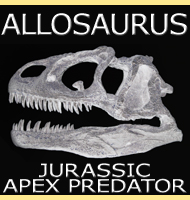 |
 |
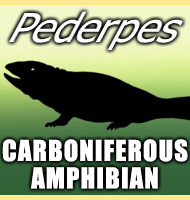 |
